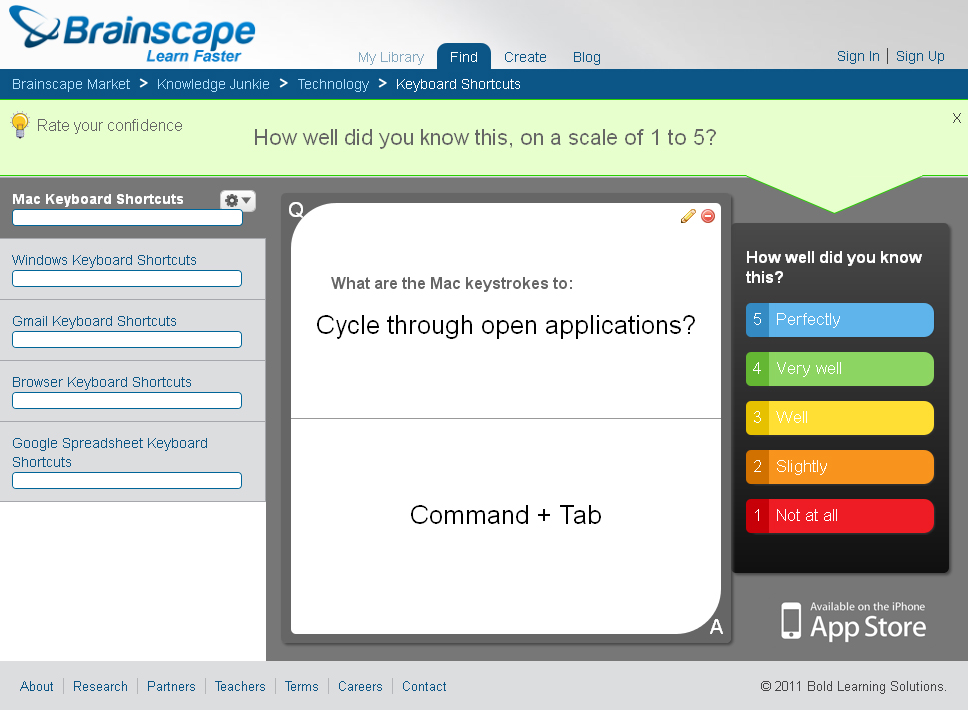When I was first thinking about education start ups, the first thing that popped into my head were websites like Phoenix University, sites to prep for graduate school entrance exams, etc. It turns out there are a lot more resources out there for students to utilize. There are now places where students can interact with professors, learn from tools tailored to their specific learning styles, and study confidently. Eventually, I hope no one will have to worry about what kind of parking pass they need, cry on the inside from overpriced books they are required to buy, and be able work from home. Here are some great startups that have helped students relieve some stress while studying.
Grockit
www.grockit.com
Grockit puts the fun into studying by using online social learning services. This company has developed a series of effective prep games for the LSAT, GMAT, SAT and high school AP classes. Recently it has started a service called Grockit Answers. Grockit Answers is a site that creates a question and answer page for any video on YouTube, allowing students to develop a better understanding on virtually any topic. The company name comes from the work grok, which means to understand something so well that it becomes a part of you. Grockit believes that students learn better through peer-to-peer learning rather than teacher-to-student and they are building their company around this belief. With almost $25 million in funding, Grockit is well on their way to helping a lot of students.
2tor
www.2tor.com
Founded in 2008, 2tor partners with colleges and universities to build, implement, and market their online degree programs. They supply the colleges with tools, expertise, and capital needed to develop and implement state-of-the-art online learning platforms. 2tor is able to enhance offline learning curriculum by creating an innovative online environment for students to learn. With $64.8 million dollars in funding so far, this company is going to continue to grow and we think become a great success.
To give you an idea of the impact 2tor can have on a school, USC’s Masters of Teaching program had about 80 students before partnering with 2tor, and all of them were on its California campus. Now it boasts almost 1,500 students enrolled in the program across 45 states and 28 countries. They all pay the same full tuition and get exactly the same degree. 2tor handles the website, supplying the students with webcams, creating online teaching materials in partnership with faculty, the logistics of finding local schools were the students themselves can practice teaching. The company shares in the tuition revenue. 2tor has most recently partnered with UNC’s Kenan Flagler business school to help them bring their MBA online.
Inigral
www.inigral.com
When Facebook was originally started it was only for college students. This meant that you had the ability to see who was taking the same courses as you. Once Facebook expanded beyond the scope of just college students this feature was discontinued. Inigral is picking up where Facebook left off. By developing an app called Schools, Inigral is able to show students not only which courses others are taking on but also other campus affiliations. This means that a student is able to see which student organizations others are joining as well as other’s athletic involvement, majors chosen, and which residence halls they are living in. What is unique about this app is that Inigral is selling it and making the colleges and universities pay for it instead of the students. With only $7 million dollars in funding, Inigiral is certainly still in their infancy and they have a lot of room to grow.
19Pencils
www.19pencils.com
19Pencils is an education startup that is geared towards K-8 educators, but can also be helpful to college students. This site helps teachers and students quickly and easily find specific web content based on a topic. It also allows educators to keep track of how much time a student is spending on a given task letting them see which students may need extra attention understanding and exploring a topic. In addition, 19Pencils has introduced Playground where students can chat online amongst themselves sharing ideas and thoughts on assigned content. While this startup is still in the very early learning stages, we think they have a great potential to grow into the education market.
“We’re so excited to be bringing easy-to-use technology to classrooms around the world. The 19Pencils educational ecosystem is a conglomeration of social bookmarking, online assessments, internet monitoring, and social media engagement – all working together to simplify and improve the educational process for both teachers and students,” said Neill Kramer, Co-founder of 19Pencils.” – BusinessWire.com (http://www.businesswire.com/news/home/20111003005152/en/19Pencils-Introduces-Easiest-Share-Web-Based-Educational-Content)
Brainscape
www.brainscape.com
Brainscape is a simple and brilliant way to facilitate studying. This site and mobile app let students use “smart studying”, where students study with interactive flash cards. As the student completes each flash card they are asked to rank the difficulty of that question. The more difficult the question is the more it shows up in the student’s deck of flashcards. There are several sets of flash cards that are built into the program and students are also able to build their own set of flashcards allowing them to study anything at all. They also offer online teachers and premium content, if you need that little extra help. Out of all the startups written about in this post, this one is by far my favorite. It is such a simple concept, but also such an important one. Using flashcards is a way for students to study verbally and visually. I think we are going to watch this company skyrocket in the coming years.
Willhelm
I’m reading Music: An Appreciation




I very much agree with your projection regarding Brainscape. I have found through years of experience that this is still the best way of learning. I think it will do quite well.
Your post is great. I continually find myeslf pushing back against those who critique online/hybrid learning by asking them to provide comparisons with f2f courses. Teachers say students don’t always contribute online. I ask what the participation percentage is in their f2f classes. Teachers say plagiarism is a problem. I say I see 8,000 to 10,000 semiformal words written be each student to compare to their major papers and projects. Etc. Etc.You cite some good sources about how students are having rewarding educational experiences online. All of us need to keep building that pool of evidence.